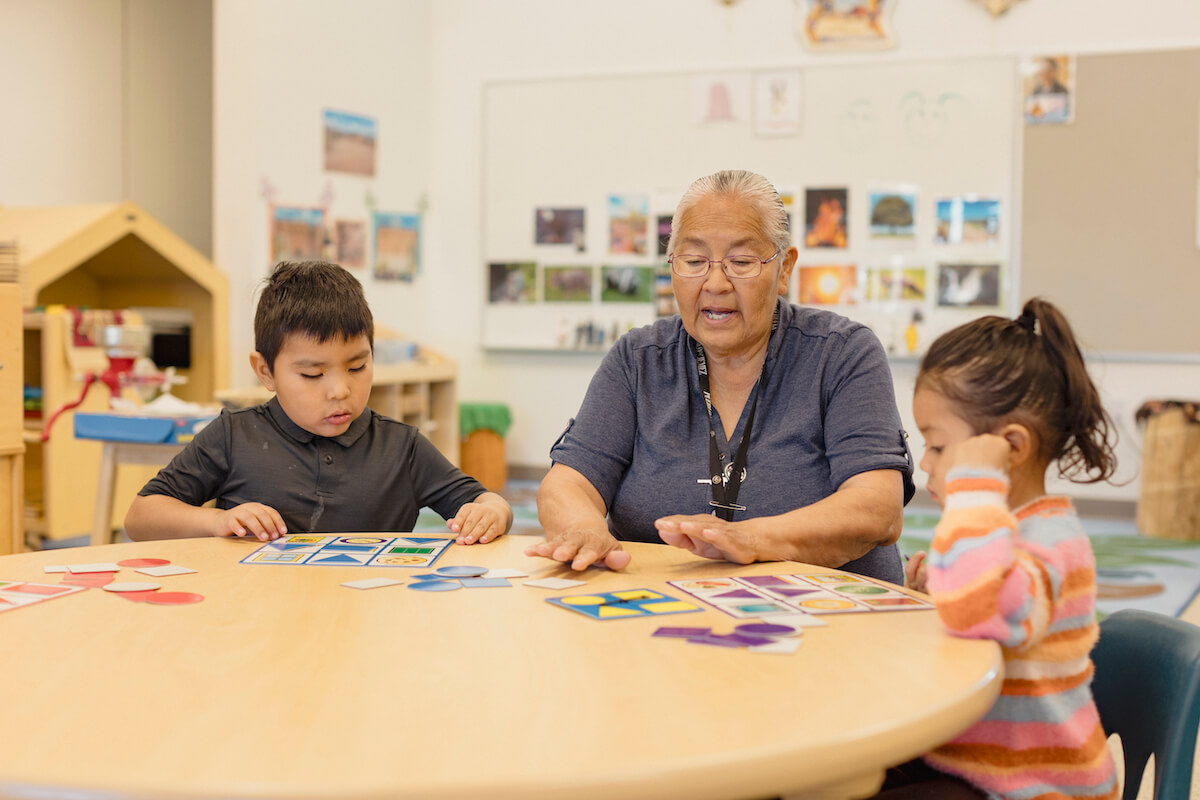Case Study: Impact of Specialized Education on Sustainable Development Goals
SDG 4: Quality Education
An analysis of a graduate’s experience in the University of Northern Colorado (UNC) deaf education program reveals a strong alignment with the objectives of Sustainable Development Goal 4. The program’s success illustrates key targets for ensuring inclusive and equitable quality education.
- Target 4.c (Supply of Qualified Teachers): The program effectively prepares and qualifies educators to work with a specialized student population (deaf and hard of hearing) from birth to 21 years. The graduate’s ability to secure employment prior to graduation highlights the program’s direct contribution to increasing the supply of highly skilled, specialized teachers.
- Target 4.a (Effective Learning Environments): The curriculum provides “cutting edge information,” equipping new professionals with the knowledge to build and maintain inclusive, effective, and disability-sensitive learning environments for students.
- Target 4.3 (Equal Access to Tertiary Education): The university provides a high-quality, specialized tertiary education program that fosters individual growth through personalized instruction, ensuring graduates are prepared for impactful careers.
SDG 8 & SDG 10: Decent Work and Reduced Inequalities
The graduate’s testimony demonstrates a clear pathway from specialized education to meaningful employment, directly supporting the aims of SDG 8 (Decent Work and Economic Growth) and SDG 10 (Reduced Inequalities).
- Education to Employment Pathway (Target 8.6): The program exhibits a successful model for transitioning students from education to the workforce, significantly reducing the risk of youth not being in employment, education, or training. The graduate secured positions in both early intervention and school settings before receiving a diploma.
- Empowerment and Inclusion (Target 10.2): By training professionals to work in deaf education, the program is instrumental in promoting the social and economic inclusion of persons with disabilities. Graduates are equipped to provide the foundational support necessary for deaf individuals to participate fully in society.
- Ensuring Equal Opportunity (Target 10.3): The work undertaken by graduates in early intervention and schools is critical to ensuring equal opportunity and reducing inequalities of outcome for the deaf community, starting from birth.
Conclusion: An Integrated Contribution to the 2030 Agenda
The reported experience underscores the integral role of specialized higher education in advancing the 2030 Agenda for Sustainable Development. The program serves as a powerful example of how a single educational initiative can have a cascading positive impact across multiple SDGs.
- The program successfully aligns quality education (SDG 4) with tangible outcomes in employment (SDG 8) and social equity (SDG 10).
- The high satisfaction reported by the graduate confirms the program’s value in creating a committed professional workforce dedicated to advancing inclusion and opportunity.
- This case demonstrates a replicable model for how educational institutions can directly contribute to achieving global sustainability and development targets.
Which SDGs are addressed or connected to the issues highlighted in the article?
-
SDG 4: Quality Education
The article is a direct testimonial about a “fantastic educational experience” in a “deaf education program.” It highlights the quality of the program, the expertise of the professors, and the positive outcomes for the graduate, all of which are central to SDG 4.
-
SDG 8: Decent Work and Economic Growth
The article explicitly mentions a successful transition from education to the workforce, stating the graduate “secured jobs in both the early intervention and school settings prior to receiving my diploma.” This connects directly to the goal of achieving full and productive employment.
-
SDG 10: Reduced Inequalities
The focus of the educational program is “deaf education.” This specialized training is designed to equip educators to support a vulnerable group (persons with disabilities), thereby promoting their inclusion and ensuring they have equal opportunities in education and life. This aligns with the goal of reducing inequalities.
What specific targets under those SDGs can be identified based on the article’s content?
-
SDG 4: Quality Education
-
Target 4.3: By 2030, ensure equal access for all women and men to affordable and quality technical, vocational and tertiary education, including university.
The article is a testimonial from a graduate of a university (UNC), highlighting the quality of the tertiary education received.
-
Target 4.5: By 2030, eliminate gender disparities in education and ensure equal access to all levels of education and vocational training for the vulnerable, including persons with disabilities.
The program’s focus on “deaf education” directly addresses the need for specialized educational access for persons with disabilities.
-
Target 4.c: By 2030, substantially increase the supply of qualified teachers.
The testimonial describes a program that successfully “prepared” and qualified a teacher for a specialized field, contributing to the supply of skilled educators.
-
Target 4.3: By 2030, ensure equal access for all women and men to affordable and quality technical, vocational and tertiary education, including university.
-
SDG 8: Decent Work and Economic Growth
-
Target 8.6: By 2030, substantially reduce the proportion of youth not in employment, education or training (NEET).
The graduate’s ability to secure jobs “prior to receiving my diploma” demonstrates a successful transition from education to employment, directly countering the issue of youth being NEET.
-
Target 8.6: By 2030, substantially reduce the proportion of youth not in employment, education or training (NEET).
-
SDG 10: Reduced Inequalities
-
Target 10.2: By 2030, empower and promote the social, economic and political inclusion of all, irrespective of… disability.
The deaf education program is a mechanism to empower and facilitate the inclusion of deaf students by providing them with quality education from “birth-21 years,” which is a foundational step for social and economic inclusion.
-
Target 10.2: By 2030, empower and promote the social, economic and political inclusion of all, irrespective of… disability.
Are there any indicators mentioned or implied in the article that can be used to measure progress towards the identified targets?
-
Implied Indicator for Target 4.3: The rate of graduate satisfaction with tertiary education.
The testimonial provides qualitative data for this indicator, with statements like “fantastic educational experience” and “I would make the same choice to attend UNC again.”
-
Implied Indicator for Target 4.c: The number of qualified teachers trained in specialized areas.
The article provides a single data point: one graduate who is now a qualified teacher in “deaf education.” This implies that the program’s output can be measured to track progress.
-
Implied Indicator for Target 8.6: The transition rate from higher education to employment.
The statement that the graduate “secured jobs… prior to receiving my diploma” is a direct measure of a successful and immediate transition from education into the workforce.
Table of SDGs, Targets, and Indicators
| SDGs | Targets | Indicators (Implied from Article) |
|---|---|---|
| SDG 4: Quality Education | Target 4.3: Ensure equal access to quality tertiary education. | Graduate satisfaction with the quality of education (“fantastic educational experience”). |
| SDG 4: Quality Education | Target 4.5: Ensure equal access to all levels of education for the vulnerable, including persons with disabilities. | Existence of specialized programs for educating vulnerable groups (“deaf education program”). |
| SDG 4: Quality Education | Target 4.c: Increase the supply of qualified teachers. | Number of graduates from teacher training programs who are prepared and qualified (“The deaf education program prepared me”). |
| SDG 8: Decent Work and Economic Growth | Target 8.6: Reduce the proportion of youth not in employment, education or training (NEET). | Rate of graduates securing employment before or immediately after graduation (“secured jobs… prior to receiving my diploma”). |
| SDG 10: Reduced Inequalities | Target 10.2: Empower and promote the inclusion of all, irrespective of disability. | Provision of educational services for persons with disabilities from early intervention onwards (“work with students from birth-21 years”). |
Source: unco.edu







